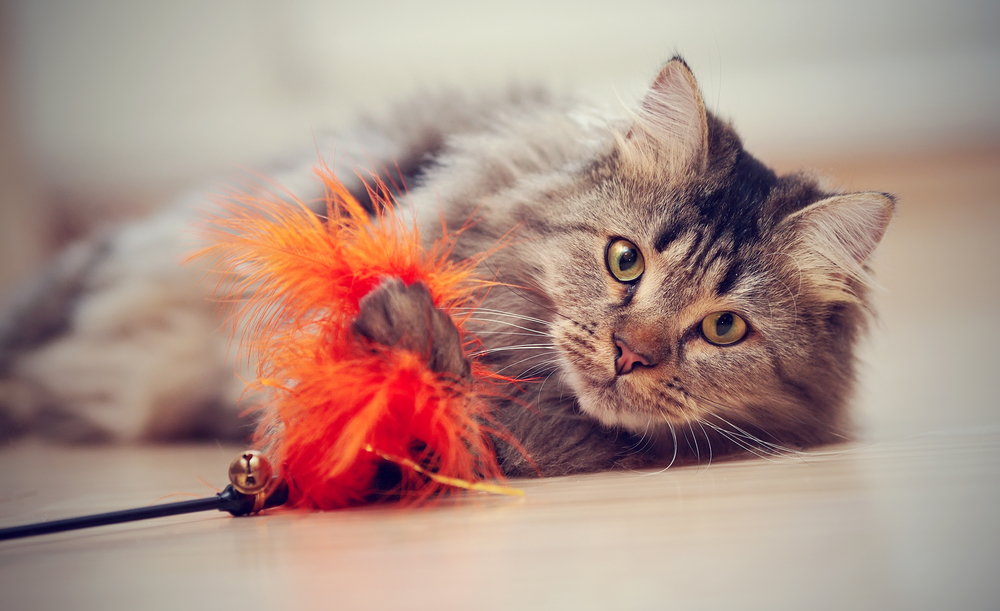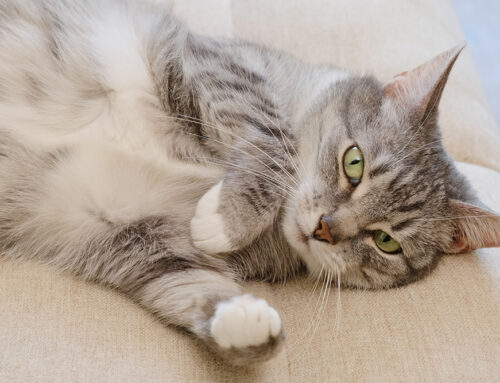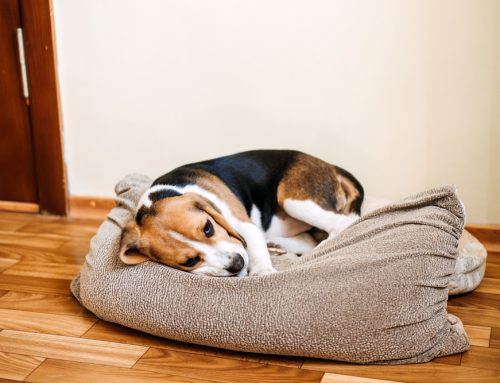By the time your pet enters their senior years, you know each other on a deep level. You know your pet’s favorite foods, toys, people, places to walk, and ways to spend their day. Simply put—you know your pet best. Because you have spent so many years with your pet, you have a multitude of experiences on which you can rely to evaluate their quality of life (QOL). To ensure your beloved companion senses their life is worth living and to prevent them from suffering prolonged pain, follow our Willow Wood Animal Hospital team’s tips to assess your senior pet’s QOL.
#1: Schedule regular wellness exams for your senior pet
You may believe you and your senior pet can read each other’s minds. However, pets are pain-masking experts, and you may be unable to determine your pet is suffering from a painful health condition until their pain is so unbearable they begin showing illness signs. Regular wellness exams are important for pets of any age, but they become particularly important for seniors—whose veterinarian should evaluate them at least every six months—to detect diseases in their earliest stage or to monitor ongoing health problems. During a senior wellness exam, your veterinarian may perform one or more of the following:
- A complete physical exam — A thorough physical examination can reveal issues, such as arthritis, heart conditions, and abdominal masses, that can cause your pet pain and suffering.
- Blood work — Blood work (i.e., complete blood count, biochemistry profile) can help diagnose conditions—such as cancer, and kidney and liver diseases—which can negatively affect your pet’s QOL.
- Urinalysis — Testing your pet’s urine can reveal issues—such as urinary tract disorders—which can cause your pet pain and discomfort.
#2: Look for signs your pet is in pain
Because you see your pet every day, you may have difficulty identifying when your beloved companion is in pain. As pets get older, they naturally slow down, but you should not mistake old age for potential pain signs. Senior pets’ chronic pain—caused by age-related conditions such as osteoarthritis and dental disease—is common. Watch your senior pet’s behavior closely for any changes that may indicate pain, such as:
- Decreased activity
- Reluctance to go for walks
- Difficulty using stairs
- Decreased appetite or thirst
- Shaking or trembling
- Excessive sleep
- Limping
- Shallow breathing
- Whimpering
- Difficulty rising
- Reluctance to jump (e.g., on the furniture or in the car)
- Excessive licking of one body area
#3: Monitor your senior pet’s cognitive function
Similar to humans, aging pets often experience a cognitive function decline that increases over time. Monitor their cognitive function to better identify decline at an early stage, and accommodate your senior pet’s needs as soon as possible. Cognitive decline signs may include:
- Disorientation — Your pet may become confused or lost in familiar places.
- Interactions — Your pet may avoid interacting with familiar people and pets, or display abnormal reactions, such as anxiety or irritability, when approached.
- Sleep-wake cycle changes — Your pet may sleep more during the day or struggle to sleep through the night.
- House soiling — Your pet may stop signaling when they need to go out, and may eliminate inappropriately.
- Memory loss — Your pet may forget familiar tasks or tricks, and struggle to learn new routines.
#4: Photograph your senior pet often
You likely have innumerable photos of your pet, and they can become a helpful tool for assessing your senior pet’s QOL over time. As your pet ages, take weekly photographs to monitor their physical appearance. When you review photos of your pet in their prime and compare them with current photos, you can identify physical changes, such as weight loss, which may be diminishing their QOL.
#5: Keep track of your senior pet’s good and bad days
Aging pets have good days and bad days, and by tracking these, you can try to determine potential causes and note when your pet is having more bad days than good—indicating decline. Each evening, reflect on your pet’s day, marking a calendar with a happy or sad face, and looking for trends.
#6 Use a quality-of-life scale to assess your senior pet
A QOL scale helps you assess your pet’s essential health elements—such as their pain, appetite, mobility, and energy levels. Consider your senior pet’s QOL by evaluating the following seven factors:
- Hurt — Evaluate your pet’s pain level and breathing ability. Is their pain well-managed? Is their breathing labored?
- Hunger — Consider your pet’s eating habits. Are they getting their daily nutrients? Are they able to feed themselves? Will they eat from your hand? Do they need a feeding tube?
- Hydration — Assess your pet’s fluid intake. Are they able to drink enough water throughout the day? If not, are you able to administer subcutaneous fluids?
- Hygiene — Observe your pet’s hygiene habits and appearance. Are they able to groom themselves appropriately? If not, are you able to keep them clean and dry?
- Happiness — Reflect on what brings your pet joy. Do they express interest and enthusiasm? Do they respond to family members and toys?
- Mobility — Evaluate your pet’s ability to move independently. Can they get around without assistance? If not, can you move them when they need help getting up or down, or going to relieve themselves?
- More good days than bad — As you track your senior pet’s QOL score, you will see when they start having more bad days than good.
Maintaining a fulfilling life for your senior pet

Your senior pet will appreciate the efforts you take to make their days fun and enjoyable. Although your golden oldie may no longer be able to run miles by your side or accompany you to the park, a few adjustments can make regular activities senior-safe. Ideas include:
- Taking a short walk — Walks do not have to be long to be beneficial. A short stroll can do wonders for your dog’s physical and mental health.
- Playing games — As little as 10 minutes of interactive play can evoke positive changes in your pet’s mood.
- One-on-one time — More than anything, your pet will enjoy your love and attention. A gentle massage, brushing, or simply cuddling on the couch can make your pet’s day.
You do not want to see your senior pet suffer, and by following these tips, you can help ensure your beloved companion continues to enjoy a life worth living. Support your senior pet’s health by contacting our Willow Wood Animal Hospital team to schedule a senior pet wellness exam.







Leave A Comment